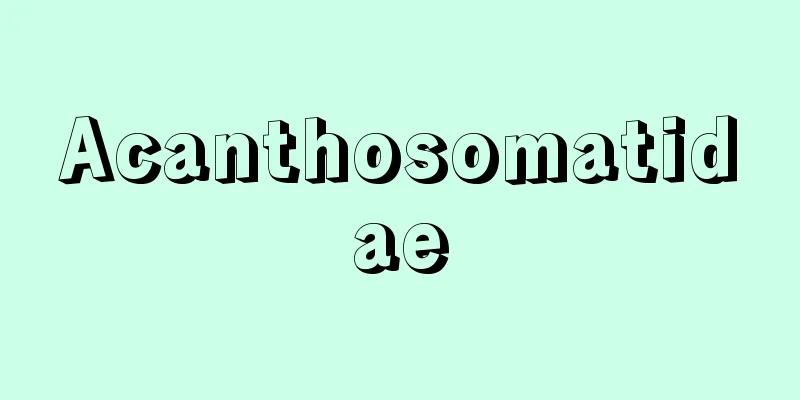Toulouse-Lautrec-Monfa

|
French painter and printmaker. Considered one of the Post-Impressionists. Born on November 24th in Albi in the south of France, Lautrec was the eldest son of Count Alphonse Toulouse-Lautrec, one of France's great nobles. He spent much of his childhood at his mother's house in Aude and at his mother's house in Paris, where he lived an aristocratic life, enjoying horse riding and hunting, and also showed an early talent for painting. However, after breaking both legs in two accidents between the ages of 14 and 15, the growth of his lower body stopped, and he began to devote himself to painting. His teacher at the time was René Princeteau, an animal painter who was a friend of his father, and Lautrec's subjects, mainly horses and carriages, showed a precocious talent for accurate drawing, depicting a sense of speed, and capturing light. In 1882, he went to Paris to study at the art school of Léon Bonnat and Fernand Cormon, where he met Emile Bernard and Van Gogh. Toulouse-Lautrec's adoption of the Neo-Impressionist pointillism technique was due to his friendship with Van Gogh. In 1884, he set up a studio in Montmartre. He began to paint more scenes from the entertainment district of Montmartre, which was his unique subject, and his style gradually moved away from impressionism. Although he had connections with and was influenced by the Nabi painters, Lautrec always respected Degas and Jean-Louis Forain (1852-1931), and he created works that were sometimes harsh but at the same time deeply sympathetic to Parisian customs. His paintings of cabarets such as the Moulin de la Galette, the Moulin Rouge, and the Mirliton, as well as dancers such as La Goulue and his partner Valentin the Boneless, were painted with an emphasis on line drawing and silhouettes, using a technique that sought to create the effect of artificial light. The freedom of perspective and compositional technique of placing a large silhouette in the foreground, as seen in works such as At the Moulin Rouge (1892, Art Institute of Chicago), were derived from Degas and Japonism. From around 1892, he became interested in singers such as Yvette Gilbert and May Belfort, and expressed their personalities and the lives behind them with precise line drawings and silhouettes. Brothels, where he himself often wandered and had many friends, also became one of Lautrec's main subjects. The same goes for the acrobats and acrobats of the Fernand Circus. The 1890s was the maturity of Lautrec's painting career, and his first solo exhibition at the Boussot & Baladon Gallery in 1893 established his reputation. In terms of technique, he experimented with painting not only on canvas, but also on board, paper, cardboard, etc., using a combination of oils, volatile oil essences, and watercolors. In particular, after his lithograph poster "Moulin Rouge, La Goulue," which he attempted in 1891 following in the footsteps of Bonnard, he produced many posters, bringing about a decisive innovation in this field. His techniques of omission, deformation, and close-ups, which were even more daring than those used in oil paintings, corresponded to the Art Nouveau and Japonism styles of the time, and also marked the beginning of 20th century poster art. He produced around 300 lithographs between 1892 and 1899, in which he again used brushes and mesh and discovered a variety of new techniques, such as the use of ink droplets. However, his drinking and dissolute lifestyle eventually took its toll on his mind and body, and he was hospitalized in 1899. He was released soon after, but died on September 9, 1901, at his mother's house in Malromé. In 1922, Toulouse-Lautrec's mother donated around 600 of his remaining works to his birthplace of Albi, and the Toulouse-Lautrec Museum was founded. [Kimio Nakayama] "The Life of Lautrec, by H. Perusio, translated by Chiba Jun (1979, Kodansha)" ▽ "Lautrec - His Life and Works, by A. Fermizier, translated by Koda Reiga (1981, Bijutsu Koronsha)" ▽ "Lautrec by Lautrec, by P. Huisman and M. Dolci, translated by Sone Motoyoshi (1965, Bijutsu Shuppansha)" ▽ "Lautrec, commentary by D. Cooper, translated by Kuroe Mitsuhiko (1962, Bijutsu Shuppansha)" ▽ "Complete Collection of Contemporary World Art 9: Lautrec, commentary by Senashi Nobuyuki (1970, Shueisha)" 1892-1895 Oil painting , owned by the Art Institute of Chicago Toulouse-Lautrec's "At the Moulin Rouge" 1887-1888 Oil painting , owned by the Art Institute of Chicago Toulouse-Lautrec's "The Horseman Ferdinand Sa… 1891 Lithograph ( Collection of the Art Institute of Chicago ) Toulouse-Lautrec's "Moulin Rouge, La..." Source: Shogakukan Encyclopedia Nipponica About Encyclopedia Nipponica Information | Legend |
|
フランスの画家、版画家。後期印象派の一人とされる。11月24日、南フランスのアルビに、フランスの大貴族の一人アルフォンス・トゥールーズ・ロートレック伯爵の嫡子として生まれる。少年時代は、パリの館(やかた)やオードにある母アデール・タピエ・ド・セレイランの館で過ごすことが多く、乗馬や狩猟に親しむ貴族的な生活を送り、かたわら絵画にも早くから才能を示した。しかし、14歳から15歳にかけての二度の事故で両足を骨折して以来、下半身の成長が止まり、以後、絵画に専念し始める。当時の彼の絵の教師は、父の友人であった動物画家ルネ・プランストーで、ロートレックの描く主題も、馬、馬車などを主とし、的確な素描力、速度感の描出、光のとらえ方に早熟な天分を示している。1882年パリに出てレオン・ボナ、フェルナン・コルモンの画塾に学び、ここで、エミール・ベルナール、ゴッホに出会っている。ロートレックが新印象主義の点描法を採用したのは、ゴッホとの親交からきている。 1884年モンマルトルにアトリエを構える。彼の独自な主題であるモンマルトルの歓楽街の情景の描写が多くなり、画風も印象主義からしだいに離れる。ナビ派の画家たちとの交流とその影響もあったが、ロートレックが終始尊敬したのはドガとフォランJean-Louis Forain(1852―1931)であり、パリ風俗の、ときには辛辣(しんらつ)だが、同時に深い共感を込めた作品が描かれる。ムーラン・ド・ラ・ギャレット、ムーラン・ルージュ、ミルリトンなどのキャバレー、そこで踊るラ・グーリュとパートナーの骨なしバランタンなどの踊り手が、線描とシルエットに重点を置き、人工光線の効果を求める手法で描かれる。『ムーラン・ルージュにて』(1892・シカゴ美術館)などにみられる、視角の設定の自由さ、前景に大きなシルエットを置く構図法は、ドガとジャポニスム(日本趣味)に由来している。1892年ごろからイベット・ギルベール、メイ・ベルフォールなどの歌手たちに興味をもち、的確な線描やシルエットで彼女たちの個性やその背後の生活を表現している。また、彼自身しばしば流連(いつづけ)し、多くの友人をもった女郎屋もロートレックの主要な主題の一つとなった。フェルナンド・サーカスの曲馬師、軽業(かるわざ)師などもそうである。1890年代はロートレックの画業の成熟期であり、1893年にブソ・エ・バラドン画廊で行われた最初の個展は彼の名声を確立させた。技法的にも、カンバスだけではなく、板、紙、厚紙などに、油、揮発性のエッサンス油、水彩などを併用して描く手法を試みている。とくに、1891年にボナールに続いて試みた石版画によるポスター『ムーラン・ルージュ、ラ・グーリュ』以後、多くのポスターを制作、この分野に決定的な革新をもたらした。油彩の場合以上に大胆な省略とデフォルメ、クローズアップの手法は、この時期のアール・ヌーボー様式やジャポニスムに対応し、また20世紀のポスター芸術の出発点となった。彼は1892年から1899年の間に約300点の石版画を制作しているが、ここでもブラシと網目を用い、インクの飛沫(ひまつ)を利用するなど、さまざまな新手法をみいだしている。しかし、飲酒と放縦な生活は、やがて彼の精神と肉体を病ませ、1899年には病院に入院、まもなく退院したが、1901年9月9日マルロメにある母の館で没した。1922年、ロートレックの母が、残された作品約600点を生地のアルビに寄贈し、ロートレック美術館が創設された。 [中山公男] 『H・ペリュショ著、千葉順訳『ロートレックの生涯』(1979・講談社)』▽『A・フェルミジエ著、幸田礼雅訳『ロートレック――その生涯と作品』(1981・美術公論社)』▽『P・ユイスマン、M・ドルチ著、曽根元吉訳『ロートレックによるロートレック』(1965・美術出版社)』▽『D・クーパー解説、黒江光彦訳『ロートレック』(1962・美術出版社)』▽『千足伸行解説『現代世界美術全集9 ロートレック』(1970・集英社)』 1892~1895年 油彩シカゴ美術研究所所蔵"> ロートレック『ムーラン・ルージュにて』 1887~1888年 油彩シカゴ美術研究所所蔵"> ロートレック『曲馬師 フェルナンド・サ… 1891年 リトグラフシカゴ美術研究所所蔵"> ロートレック『ムーラン・ルージュ、ラ・… 出典 小学館 日本大百科全書(ニッポニカ)日本大百科全書(ニッポニカ)について 情報 | 凡例 |
Recommend
Akira Ohta
1884-1956 A Japanese history scholar from the Tai...
Silicate minerals - silicate minerals
A mineral whose main components are silicon (Si) a...
Couperin, C.
…French composer, organist and violinist. The mos...
stage lighting designer
… [Work system] Except for improvisational perfor...
Financial Institutions Financing Standards
...However, the blocked deposits were withdrawn t...
Yoshitoshi Shibukawa
Year of death: November 14, 1434 (December 14, 143...
Domed tomb - Engaibo
…Three types of tombs are known depending on the ...
Calcium Light - Calcium Light
...Also called lime light, gray light lamp, calci...
Masumi
...the main political party representing Islam in...
Carol
...However, there were works such as the polyphon...
Kusaie
Kosrae is a volcanic island in the eastern part o...
Complete division - Kanzenbunkatsu
…Its distinctive feature is that it clarifies the...
Equestrian Park - Bajikoen
An equestrian center in Setagaya, Tokyo. It opened...
Oncidium sphacelatum
…[Koichi Ejiri]. … *Some of the terminology that ...
Gripari, P.
...Furthermore, there are M.-A. Baudouy, C. Vivie...









